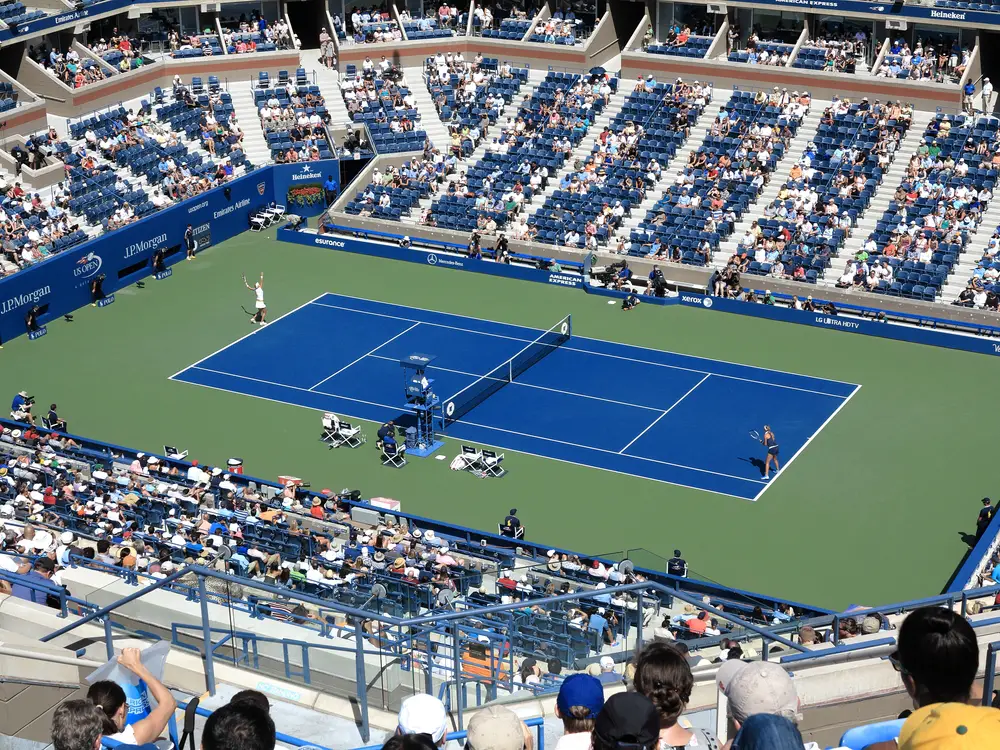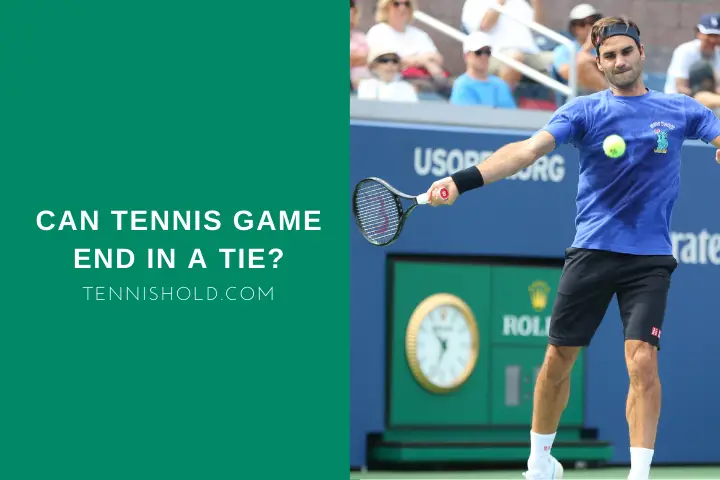There are many activities in which matches can end in a draw. This is especially true for sports that use a leagues system, such as soccer.
In the 2019/20 Premier League season, Arsenal recorded as many draws as they did wins.
Apart from the Billie Jean King Cup and Davis Cup events, no professional tennis events use a league system. Does this mean a match cannot end in a tie?
There is no situation where a match can end in a tie, at least at the professional level. By professional level, I refer to events organized by the ATP, WTA, and ITF. Some small amateur leagues may allow for draws, but this is rare.
In this article I will be discussing:
- The reasons a tennis match can’t end in a draw
- The functions of a tiebreak
- Whether tiebreaks are bad for tennis
Tennis has a long tradition of not allowing matches to end in draws. However, tiebreaks are a relatively new concept.
Further on, I will be discussing what was done before the invention of tie breaks.
If you’re keen to learn more about ties, or lack of ties in tennis, read on!
Why Cannot Tennis Matches End As Tie?

The main reason that matches cannot end is that the scoring system doesn’t allow for it.
The two scoring systems used in professional tennis are best of 3 and best of 5 set matches.
For a best of 3 set match, a player must win two sets. As there is a maximum of 3 sets, it is not mathematically possible to end in a draw.
However, it’s clearly not an option for a match to end in a draw with these systems. But a match might be so close that it feels like a draw partway through.
Is there any way to reduce the chance of a match feeling like a never-ending deadlock?
Yes, the tiebreak!
The tiebreak was invented to reduce the chances of matches going on forever.
In almost all events, a tiebreak will be played at 6 games, all in a set. This is played to end the tie within a set.
Of course, you could just keep playing until one player achieves a two-game lead. That, however, is hardly practical for players or tournament organizers.
Tiebreaks provide an efficient way to end a tie within a set and keep matches on the schedule.
For players, the benefit is there is a limit to the number of games they can play within a given event. This preserves their energy for future matches.
How Do Tie-Breakers Work In Tennis?

A tiebreak is triggered when the score in a given set reaches 6-6. The exception to this is the final set of a match at Wimbledon.
At Wimbledon, a tiebreak is played in the final set when the score reaches 12-12. In other sets, it is played at 6-6.
Let’s imagine Nadal is playing against Federer. If the score is 5-6, and Nadal is serving, and he wins the game, Federer will serve first in the tiebreak.
The reason for this is that the tiebreak is considered a game in itself.
As Federer served first, it is considered his service game. Therefore, it will be Nadal to serve first in the next set.
Tiebreaks are played in 1-2-2 formation or odd number rotation. Therefore, every time the score equals an odd number, the server will change.
In my example, Federer will serve the first point from the deuce (right) side. Then, regardless of who wins the point, Nadal will serve the next point from the advantage (left) side.
After Nadal has played the 2nd point, the score will equal an even number. This means Nadal will serve one more point from the deuce side.
After Nadal has served twice, it will again be Federer’s turn to serve, starting from the advantage side.
The tiebreak will follow the same pattern until one player reaches 7 points with a minimum lead of 2. This means that if the score is 6-6, the minimum score needed to win the tiebreak and set is 8-6.
Players will switch sides with each other every time the score equals a multiple of 6. For example, 4-2 or 6-6.
Are Tie-Breakers Bad For Tennis?

Before the 1960s, there was no contingency for a tiebreak in tennis. If you can’t break your opponent’s serve and they can’t break yours, the match will continue indefinitely.
The tiebreak was invented in 1965 by Jimmy Van Alen. Van Alen was an American player active in the late 1920s.
His best achievements were reaching 2nd rounds of the Australian and US Opens.
The tiebreaker invented by Van Alen in 1965 evolved into the modern 7-point tiebreak that we know today.
My opinion is that tiebreaks are not bad for tennis, but necessary.
It is difficult for tournament organizers to schedule and plan if they don’t have a rough idea of how long a match will last.
The consequences of tiebreaks are that the odds of matches going on for very long periods are greatly reduced.
I remember the 2010 Wimbledon match between John Isner and Nicolas Mahut. This was the longest match in history.
The reason it was able to go on so long was that Wimbledon did not feature a 5th set tiebreak.
As neither of the players was able to break serve, the match went on for three days. Isner eventually won the 5th set 70-68.
As a fan, I love the idea of a match going on forever until one player breaks serve. I think for the quality of performance, welfare of the players, and logistics for organizers, tiebreaks are good for tennis.
After the Isner-Mahut match, a sports surgeon said that the players risked kidney damage, dehydration, and hyperthermia due to the length of the match.
He also said that the players might experience persistent injury problems for the next six months.
Final Words
I’ve been involved in tennis for over a decade, and I’ve only ever experienced one league that allows for ties.
A low-level club league recorded a match as a draw if the score was 1-1 in sets.
I think part of the appeal of tennis is the scoring system that guarantees a winner. Therefore, I would not like to see tennis matches end in draws.
What do you think? Should tennis be reformed into a league system that allows for draws? For example, if a match reaches a tiebreak, should it just be considered a draw?

